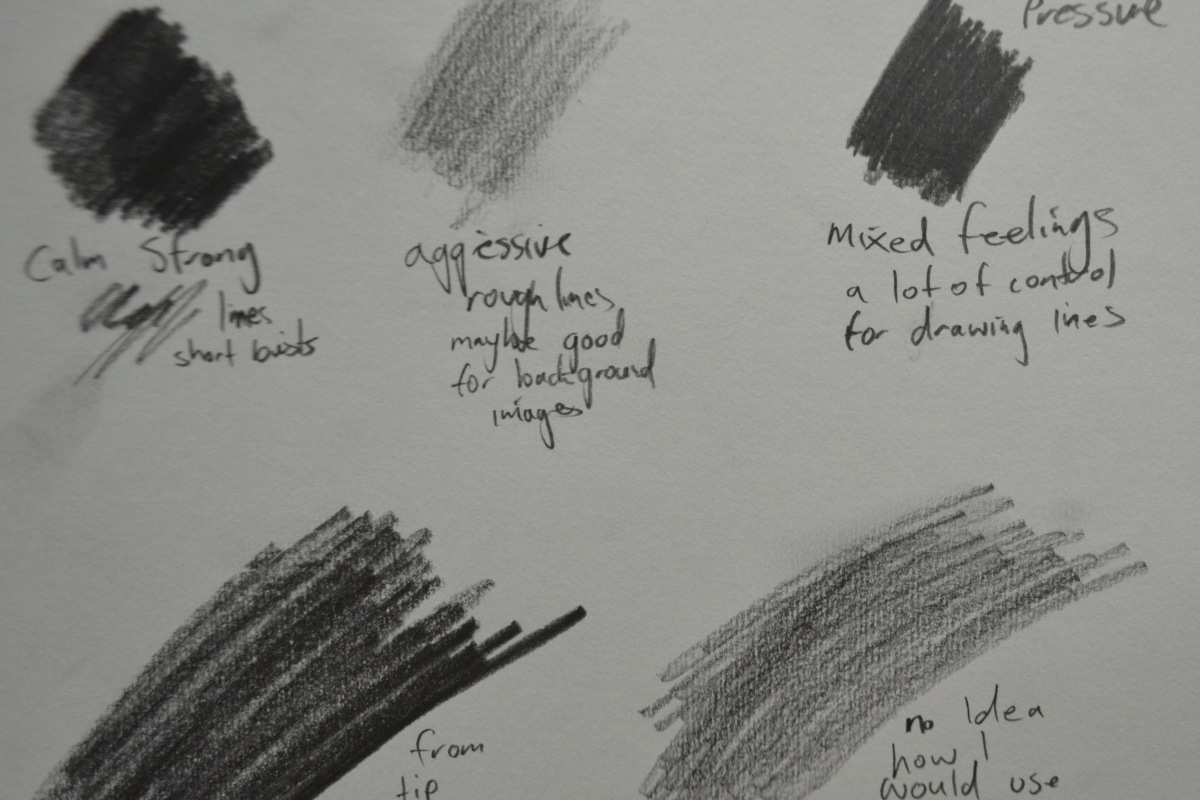This was a great exercise for getting to my newly purchased drawing tools, nib pens, Conté crayons, soft pastels, oil pastels, charcoal, solid graphite pencils and drawing pens plus a few more. The aim was to practise holding pens and pencils in different ways to see how they affect the way we approach drawing and the difference they make to our mark-making and how we draw.
Starting off with a B sketching pencil I found that holding the pen close to the end in what I would call the natural writing position gives you the most control with the wrist acting as the pivot for movement which allows you to make marks more precisely. The conclusion I got from the making large strokes is that this technique is limited to drawing outlines.
Holding the pencil at the tip and pushing down with the index-finger gave me broad, soft lines, full of texture, amplified by the texture of the paper in my sketch book. It can be used for larger strokes by using the elbow as a pivot but it is undoubtedly better for covering small areas.
By holding the pencil at the very top and letting it dangle between my fingers created different marks, sometimes narrow other times broad and more textured, depending on the angle of the pencil which changed depending on how close my hand was to the paper. Holding the pencil in this manner gives you softer marks and allows for a longer stroke, although not precise this seems to be the most expressive.

I took note of the mood that strokes made by the different ways of holding the pencil seemed to express, calm, aggressive etc. I noticed that by applying more pressure and moving in larger strokes that the mood seemed to change.

I tried holding several types of pens in the same three ways and found that only my Artliner drawing pens and Bic ballpoints changed in stroke and texture when gripping them in different ways. The size of the stroke from my 1.0 mm marker altered only slightly and the nib pen using different sized nibs and Chinese ink only allowed me to make downward strokes. The nib pen is probably my least favourite at the moment but in time I shall learn how to use it successfully.

It was the first time I had used charcoal or Conté crayons but I found that they both make very similar marks. Using the edge of the tip of both gives a very strong line whilst using the side of both produces wide, soft, textured marks.

It was also the first time I had used soft pastels and oil pastels and found that the oil pastels had although making a similar mark to soft pastels felt more like a wax crayon while drawing on the paper. The soft pastels like the charcoal and Conté and charcoal can be smoothed in with the finger but I found them very messy and I shall have to practise how to use these along with fixative spray.
